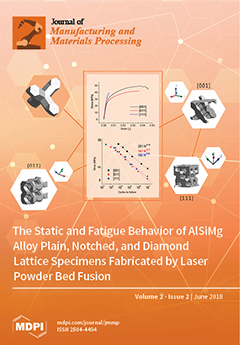Open AccessArticle
Coating of Ultra-Small Micro End Mills: Analysis of Performance and Suitability of Eight Different Hard-Coatings
by
Martin Bohley, Ingo G. Reichenbach, Sonja Kieren-Ehses, Lukas Heberger, Peter A. Arrabiyeh, Rolf Merz, Luisa Böhme, Julian Hering, Benjamin Kirsch, Michael Kopnarski, Eberhard Kerscher, Georg Von Freymann and Jan C. Aurich
Cited by 8 | Viewed by 5079
Abstract
Due to the constant need for better functionalized surfaces or smaller, function integrated components, precise and efficient manufacturing processes have to be established. Micro milling with micro end mills is one of the most promising processes for this task as it combines a
[...] Read more.
Due to the constant need for better functionalized surfaces or smaller, function integrated components, precise and efficient manufacturing processes have to be established. Micro milling with micro end mills is one of the most promising processes for this task as it combines a high geometric flexibility in a wide range of machinable materials with low set-up costs. A downside of this process is the wear of the micro end mills. Due to size effects and the relatively low cutting speed, the cutting edge is especially subjected to massive abrasive wear. One possibility to minimize this wear is coating of micro end mills. This research paper describes the performance of eight different hard coatings for micro end mills with a diameter <40 µm and discusses some properties for the best performing coating type. With this research, it is therefore possible to boost the possibilities of micro milling for the manufacture of next generation products.
Full article
►▼
Show Figures





